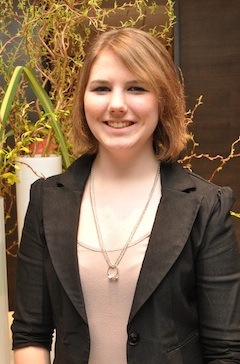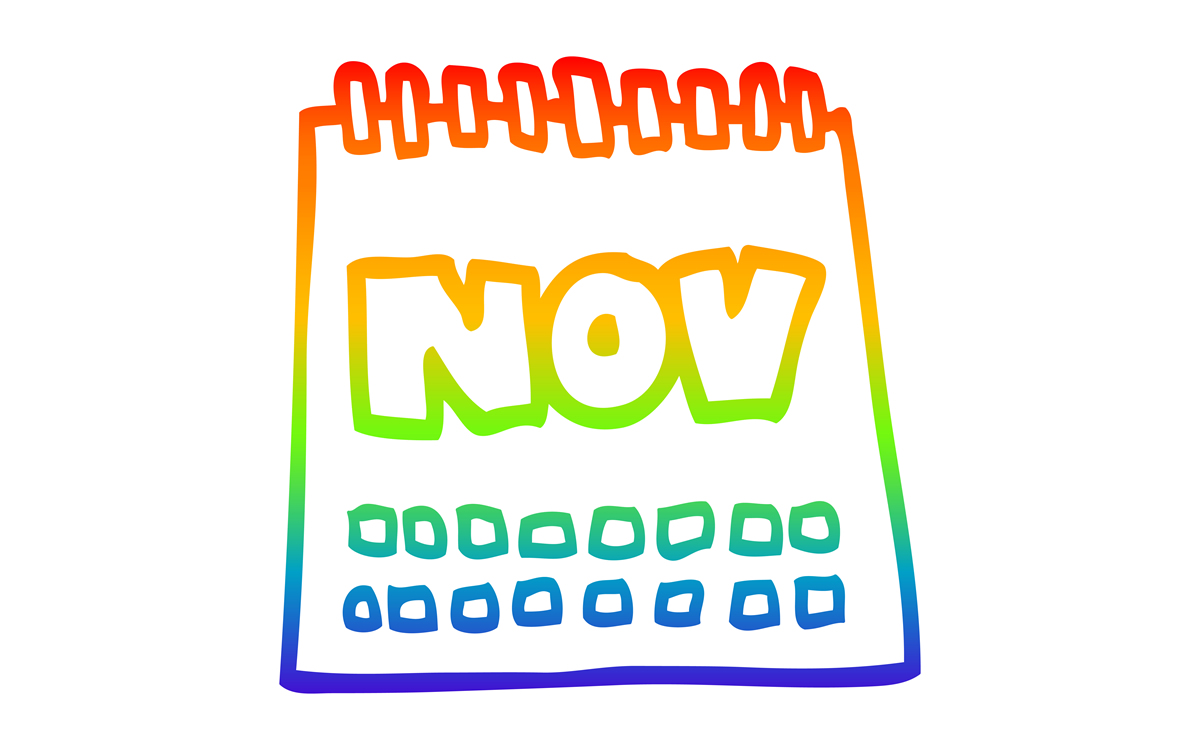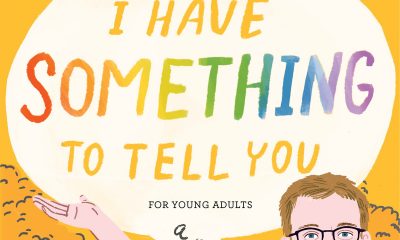Arts & Entertainment
Showdown over an ‘R’ rating
New documentary on bullying leads lesbian teen on a mission

Katy Butler, 17, launched a Change.org petition to change the rating for the upcoming documentary “Bully” and was in D.C. last week to bring attention to her cause.
“When I saw this new movie was coming out, I thought it was so awesome, because it was about bullying and had such a great message, and then I saw that it was rated ‘R’ … it’s missing the entire target audience of the film, which is the middle and high school students,” Butler says about why she started the petition.
Filmed over the 2009-10 school year, “Bully,” directed by Lee Hirsch, follows three students who have been bullied, including one who brought a gun to school and is now in juvenile detention awaiting the outcome of her case, and two sets of parents whose sons committed suicide after being bullied.
The film’s website, thebullyproject.com, states that more than 13 million American kids will be bullied this year and three million students are absent each month because they do not feel safe in school. A disproportionate number of them are LGBT.
According to filmratings.com, a website the Motion Picture Association of America links to, “Bully” received an ‘R’ rating for “some language.” The word “fuck” is used multiple times in the film.
According to the MPAA’s classification and rating rules effective, Jan. 1, 2010, “a motion picture’s single use of one of the harsher sexually derived words … initially requires at least a PG-13 rating. More than one such expletive requires an R rating, as must even one of those words used in a sexual context.”
One of the complaints about the rating is the difficulty pre-teens and most teenagers will have in seeing the film. While an R rating does not keep them from seeing the movie altogether, it does restrict when they can see it, since they will need a parent with them.
It is also more difficult to get schools to show R-rated films, as it requires permission slips to be signed in many school districts.
“The R rating is not a judgment on the value of any movie. The rating simply conveys to parents that a film has elements strong enough to require careful consideration before allowing their children to view it,” Joan Graves, chairman of the classification and rating administration, said in a statement released after receiving the petition.
Butler, who came out as a lesbian in middle school, has been the victim of bullying herself.
“My school didn’t really like that, they called me names … pushed me into lockers and into walls, they ended up slamming my hand into my locker and breaking my finger,” Butler says.
Some have asked why the filmmakers don’t just remove the scenes with the expletives, or censor just the word, since many say if the word was used more sparingly, the film would have received a PG-13 rating, but Butler doesn’t think that would help matters.
“They can’t take out the word, it won’t have the same message. It won’t have the same effect on the kids, parents and teachers who see this movie,” Butler says. “Those are the words that kids used everyday in school to bully each other … no one goes into schools and takes out those words.”
The MPAA also hosted a screening with D.C.-area principals and educators on March 15. The screening was followed by a panel discussion on the challenges educators face in dealing with bullying and how to best ensure that students feel safe when they are in school.
MPAA Chairman Chris Dodd (a former U.S. senator), “Bully” distributor Harvey Weinstein, “Bully” director Lee Hirsch, D.C. Public Schools Chancellor Kaya Henderson and Joseph Wright, senior vice president and head of the Child Health Advocacy Institute at Children’s National Medical Center in Washington, were on the panel.
As of Tuesday afternoon, Butler’s petition had garnered about 439,000 signatures.
Graves’s statement said that the MPAA shares Butler’s goal of highlighting the problems with bullying.
“Katy Butler’s efforts in bringing the issue of bullying to the forefront of a national discussion in the context of this new film are commendable and we welcome the feedback about this movie’s rating,” Graves said in the statement. “We hope that her efforts will fuel more discussion among educators, parents and children.”
Butler has met with the head of the ratings board, when she hand delivered the signed petitions.

Katy Butler was in Washington last week to encourage the MPAA to reconsider its R rating for the new documentary ‘Bully.’ (Blade photo by Michael Key)
Butler’s efforts to change the rating have been noticed by many, including Ellen DeGeneres, who had Butler on her talk show and has asked her viewers to follow her lead and sign the petition.
“Ellen is wonderful, she is one of my roles models,” Butler says of the comedian. “I definitely couldn’t be doing what I’m doing right now without her.”
DeGeneres is not the only celebrity to push for the MPAA to change the rating. New Orleans Saints quarterback Drew Brees has Tweeted for his followers to sign the petition. A bipartisan group of 26 members of Congress has thrown its support behind the petition.
Younger celebrities, such as Justin Beiber and Demi Lovato, have also been pushing for people to sign the petition, Tweeting about it to their many followers.
“I think [Bieber and Lovato] especially are hitting the preteen, middle school age group because those are their fans,” Butler says. “If your role model is supporting something as important as bullying, then a lot of the time, these kids are going to look at it too.”
Butler will receive a special award, presented by Harvey Weinstein, whose production company is releasing the film, at GLAAD’s 23rd annual Media Awards in New York City on Saturday.
“The MPAA made a mistake in restricting this film to adult audiences. Everyone — young and old alike — needs to see this film and the devastating impact that bullying can have on today’s young people,” says GLAAD spokesperson Herndon Graddick. “Katy has bravely used her voice to take a stand and has inspired countless Americans, including so many members of Congress and public figures, to show their support for the safety of all our children.”
All the advocacy toward changing “Bully’s” rating is just the beginning for this high school junior. Butler plans on studying political activism once she finishes high school. She would like to attend the University of Michigan or a school in the D.C., New York or Chicago areas.
“Bully” opens in theaters in New York and Los Angeles on March 30 and D.C. and other cities on April 13.
Movies
Superb direction, performances create a ‘Day’ to remember
A rich cinematic tapestry with deep observations about art, life, friendship

According to writer/director Ira Sachs, “Peter Hujar’s Day” is “a film about what it is to be an artist among artists in a city where no one was making any money.” At least, that’s what Sachs – an Indie filmmaker who has been exploring his identities as both a gay and Jewish man onscreen since his 1997 debut effort, “The Delta” – told IndieWire, with tongue no doubt firmly planted in cheek, in an interview last year.
Certainly, money is a concern in his latest effort – which re-enacts a 1974 interview between photographer Peter Hujar (Ben Whishaw) and writer Linda Rosenkrantz (Rebecca Hall), as part of an intended book documenting artists over a single 24-hour period in their lives – and is much on the mind of its titular character as he dutifully (and with meticulous detail) recounts the events of his previous day during the course of the movie. To say it is the whole point, though, is clearly an overstatement. Indeed, hearing discussions today of prices from 1974 – when the notion of paying more than $7 for Chinese takeout in New York City seemed outrageous – might almost be described as little more than comic relief.
Adapted from a real-life interview with Hujar, which Rosenkrantz published as a stand-alone piece in 2021 (her intended book had been abandoned) after a transcript was discovered in the late photographer’s archives, “Peter Hujar’s Day” inevitably delivers insights on its subject – a deeply influential figure in New York culture of the seventies and eighties, who would go on to document the scourge of AIDS until he died from it himself, in 1987. There’s no plot, really, except for the recalled narrative itself, which involves an early meeting with a French journalist who is picking up Hujar’s images of model Lauren Hutton, an afternoon photo shoot with iconic queer “Beat Generation” poet/activist Allen Ginsburg, and an evening of mundane social interaction over the aforementioned Chinese food. Yet it’s through this formalized structure – the agreed-upon relation of a sequence of events, with the thoughts, observations, and reflections that come with them – that the true substance shines through.
In relaying his narrative, Hujar exhibits the kind of uncompromising – and slavishly precise – devotion to detail that also informed his work as a photographer; a mundane chronology of events reveals a universe of thought, perception, and philosophy of which most of us might be unaware while they were happening. Yet he and Rosenkrantz (at least in Sachs’ reconstruction of their conversation) are both artists who are keenly aware of such things; after all, it’s this glimpse of an “inner life” of which we are rarely cognizant in the moment that was/is their stock-in-trade. It’s the stuff we don’t think of while we’re living our lives – the associations, the judgments, the selective importance with which we assign each aspect of our experiences – that later becomes a window into our souls, if we take the opportunity to look through it. And while the revelations that come may occasionally paint them in a less-than-idealized light (especially Hujar, whose preoccupations with status, reputation, appearances, and yes, money, often emerge as he discusses the encounter with Ginsberg and his other interactions), they never feel like definitive interpretations of character; rather, they’re just fleeting moments among all the others, temporary reflections in the ever-ongoing evolution of a lifetime.
Needless to say, perhaps, “Peter Hujar’s Day” is not the kind of movie that will be a crowd-pleaser for everyone. Like Louis Malle’s equally acclaimed-and-notorious “My Dinner With Andre” from 1981, it’s essentially an action-free narrative comprised entirely of a conversation between two people; nothing really happens, per se, except for what we hear described in Hujar’s description of his day, and even that is more or less devoid of any real dramatic weight. But for those with the taste for such an intellectual exercise, it’s a rich and complex cinematic tapestry that rewards our patience with a trove of deep observations about art, life, and friendship – indeed, while its focus is ostensibly on Hujar’s “day,” the deep and intimate love between he and Rosenkrantz underscores everything that we see, arguably landing with a much deeper resonance than anything that is ever spoken out loud during the course of the film – and never permits our attention to flag for even a moment.
Shooting his movie in a deliberately self-referential style, Sachs weaves the cinematic process of recreating the interview into the recreation itself, bridging mediums and blurring lines of reality to create a filmed meditation that mirrors the inherent artifice of Rosenkrantz’s original concept, yet honors the material’s nearly slavish devotion to the mundane minutiae that makes up daily life, even for artists. This is especially true for both Hujar and Rosenkrantz, whose work hinges so directly to the experience of the moment – in photography, the entire end product is tied to the immediacy of a single, captured fragment of existence, and it is no less so for a writer attempting to create a portrait (of sorts) composed entirely of fleeting words and memories. Such intangibles can often feel remote or even superficial without further reflection, and the fact that Sachs is able to reveal a deeper world beyond that surface speaks volumes to his own abilities as an artist, which he deploys with a sure hand to turn a potentially stagnant 75 minutes of film into something hypnotic.
Of course, he could not accomplish that feat without his actors. Whishaw, who has proven his gifts and versatility in an array of film work including not only “art films” like this one but roles from the voice of Paddington Bear to “Q” in the Daniel Craig-led “James Bond” films, delivers a stunning performance, carrying at least 75% of the film’s dialogue with the same kind of casual, in-the-moment authenticity as one might expect at a dinner party with friends; and though Hall has less speaking to do, she makes up for it in sheer presence, lending a palpable sense of respect, love, and adoration to Rosenkrantz’s relationship with Hujar.
In fact, by the time the final credits role, it’s that relationship that arguably leaves the deepest impression on us; though these two people converse about the “hoi polloi” of New York, dropping legendary names and reminding us with every word of their importance in the interwoven cultural landscape of their era, it’s the tangible, intimate friendship they share that sticks with us, and ultimately feels more important than any of the rest of it. For all its trappings of artistic style, form, and retrospective cultural commentary, it’s this simple, deeply human element that seems to matter the most – and that’s why it all works, in the end. None of its insights or observations would land without that simple-but-crucial link to humanity.
Fortunately, its director and stars understand this perfectly, and that’s why “Peter Hujar’s Day” has an appeal that transcends its rarified portrait of time, place, and personality. It recognizes that it’s what can be read between the lines of our lives that matters, and that’s an insight that’s often lost in the whirlwind of our quotidian existence.
Out & About
Gala Hispanic Theatre’s Flamenco Festival returns

Gala Hispanic Theater will host the 21st Annual “Fuego Flamenco Festival” from Thursday, Nov. 6 to Saturday, Nov. 22.
The festival will feature American and international artists who will gather in the nation’s capital to celebrate the art of Flamenco. Guests can save 20% on tickets with a festival pass.
The festival kicks off now through Nov. 10 with the D.C. premiere of Crónica de un suceso, created, choreographed and performed by Rafael Ramírez from Spain, accompanied by renowned flamenco singers and musicians. In this new show, Ramírez pays homage to the iconic Spanish Flamenco artist Antonio Gades who paved the way for what Flamenco is today. GALA’s engagement is part of an eight-city tour of the U.S. by Ramírez and company.
The magic continues Nov. 14-16 with the re-staging of the masterpiece Enredo by Flamenco Aparicio Dance Company, a reflection of the dual nature of the human experience, individual and social, which premiered at GALA in 2023.
For more information, visit the theatre’s website.

Friday, November 7
“Center Aging Friday Tea Time” will be at 12 p.m. in person at the DC Center for the LGBT Community’s new location at 1827 Wiltberger St., N.W. To RSVP, visit the DC Center’s website or email [email protected].
Go Gay DC will host “LGBTQ+ Community Social” at 7 p.m. at Silver Diner Ballston. This event is ideal for making new friends, professional networking, idea-sharing, and community building. This event is free and more details are available on Eventbrite.
Saturday, November 8
Go Gay DC will host “LGBTQ+ Community Brunch” at 12 p.m. at Freddie’s Beach Bar & Restaurant. This fun weekly event brings the DMV area LGBTQ+ community, including allies, together for delicious food and conversation. Attendance is free and more details are available on Eventbrite.
Sunday Supper on Saturday will be at 2 p.m. at the DC Center for the LGBT Community. This event will be full of food, laughter and community. For more information, email [email protected].
Monday, November 10
“Center Aging: Monday Coffee Klatch” will be at 10 a.m. on Zoom. This is a social hour for older LGBTQ adults. Guests are encouraged to bring a beverage of choice. For more information, contact Adam ([email protected]).
“Soulfully Queer: LGBTQ+ Emotional Health and Spirituality Drop-In” will be at 3 p.m. at the DC Center for the LGBT Community. This group will meet weekly for eight weeks, providing a series of drop-in sessions designed to offer a safe, welcoming space for open and respectful conversation. Each session invites participants to explore themes of spirituality, identity, and belonging at their own pace, whether they attend regularly or drop in occasionally. For more details visit the DC Center’s website.
Genderqueer DC will be at 7 p.m. on Zoom. This is a support group for people who identify outside of the gender binary, whether you’re bigender, agender, genderfluid, or just know that you’re not 100% cis. For more details, visit genderqueerdc.org or Facebook.
Wednesday, November 12
Job Club will be at 6 p.m. on Zoom. This is a weekly job support program to help job entrants and seekers, including the long-term unemployed, improve self-confidence, motivation, resilience and productivity for effective job searches and networking — allowing participants to move away from being merely “applicants” toward being “candidates.” For more information, email [email protected] or visit thedccenter.org/careers.
“Gay Men Speed Dating” will be at 7 p.m. at Public Bar Live. This is a fresh alternative to speed dating and matchmaking in a relaxed environment. Tickets start at $37 and are available on Eventbrite.
Thursday, November 13
The DC Center’s Fresh Produce Program will be held all day at the DC Center for the LGBT Community. People will be informed on Wednesday at 5 p.m. if they are picked to receive a produce box. No proof of residency or income is required. For more information, email [email protected] or call 202-682-2245.
Virtual Yoga Class will be at 7 p.m. on Zoom. This is a free weekly class focusing on yoga, breathwork, and meditation. For more details, visit the DC Center for the LGBT Community’s website.
-

 District of Columbia2 days ago
District of Columbia2 days ago‘Sandwich guy’ not guilty in assault case
-

 Sports2 days ago
Sports2 days agoGay speedskater racing toward a more inclusive future in sports
-

 Celebrity News4 days ago
Celebrity News4 days agoJonathan Bailey is People’s first openly gay ‘Sexiest Man Alive’
-

 Michigan4 days ago
Michigan4 days agoFBI thwarts Halloween terror plot targeting Mich. LGBTQ bars





















